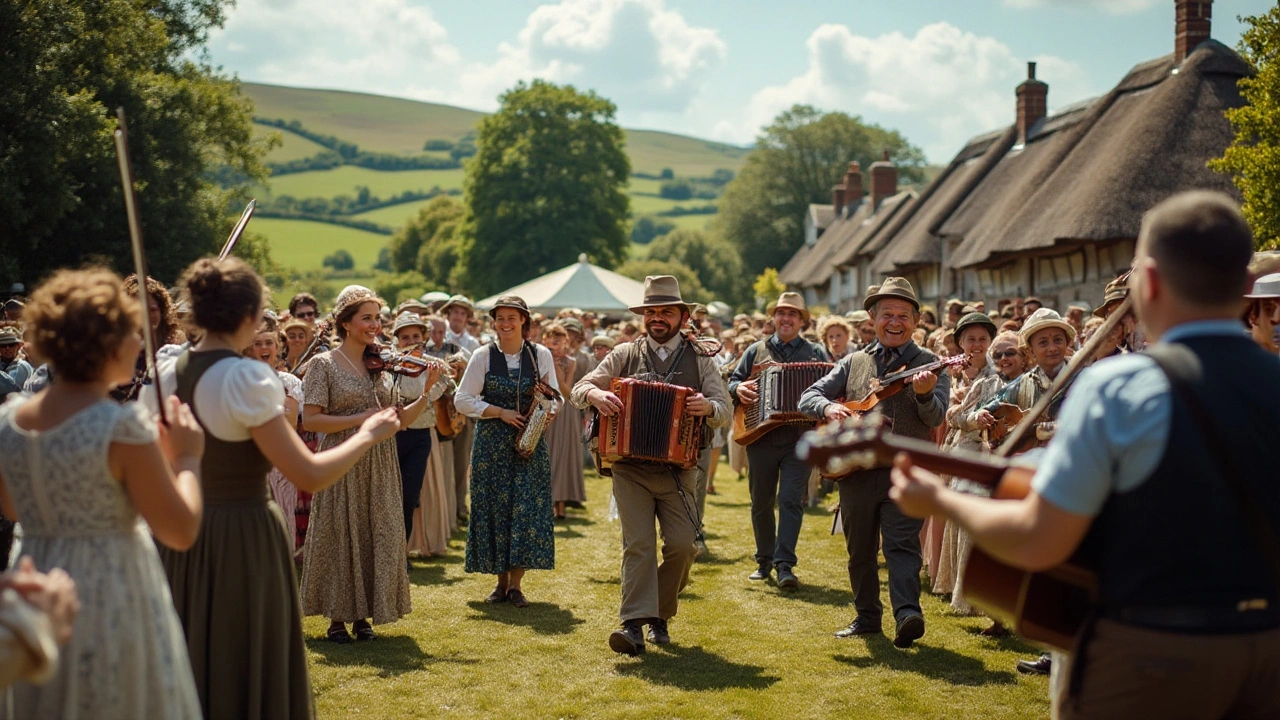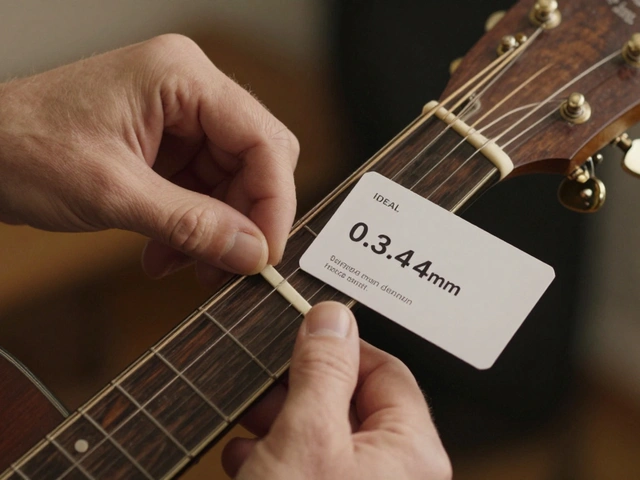Folk music is more than just a genre; it’s a gateway to our past. It's the sound of our ancestors, capturing the life and times of people long ago. Each song tells a story, painted with the colors of different cultures and communities.
Understanding the basics of folk music includes recognizing its simplicity and beauty. It’s music that is passed down through generations, often orally, and carries with it the emotions and experiences of those who came before us.
Understanding Folk Music
To truly appreciate folk music, it’s essential to delve into its core characteristics and elements. Folk music is the musical expression of a community. It is often rooted in the everyday experiences and struggles of ordinary people. These songs could narrate tales of love, hardships, celebrations, and historical events. One striking feature of folk music is its simplicity. Unlike classical music, which can be intricate and complex, folk songs often use simple melodies and lyrics that anyone can pick up and sing.
The transmission of folk music from one generation to the next is a cornerstone of its identity. Written scores are rare; instead, folk music is typically taught by ear, reflecting the oral traditions of our ancestors. This means that a song can evolve over time, taking on new shapes and forms as it moves through different hands. When listening to folk music, one can almost hear the voices of generations past, melding into the present.
Another critical aspect of folk music is its communal nature. It is often performed in groups, with people joining in with their voices or simple instruments. The collective experience of making music together fosters a sense of belonging and shared identity. This aspect of community involvement is one of the main reasons why folk music has endured through the ages.
Folk music traditions vary widely around the world. For example, the folk songs of Ireland, with their lilting melodies and rich storytelling, differ significantly from the rhythmic, drumming-centered music of West African cultures. Each region’s folk music provides a snapshot of its cultural landscape. For instance, American folk music is a melting pot of influences, reflecting the diverse immigrant populations that shaped the country.
It's interesting to note that many modern music genres have roots in folk music. Blues, country, and even rock music can trace their origins back to folk traditions. For instance, Woody Guthrie and Bob Dylan, who are often considered the fathers of American folk music, had a profound influence on the evolution of modern music. Their songs not only entertained but also commented on social issues and inspired movements.
As Pete Seeger once said, "The key to the future of the world is finding the optimistic stories and letting them be known." Folk music plays an integral role in this, preserving stories and lessons from the past for future generations.
In understanding folk music, it’s essential to appreciate its adaptability. It thrives because it is neither static nor confined to a specific place or time. Instead, it grows and changes, absorbing new influences while retaining the essence of its roots. This adaptability ensures that folk music remains relevant and cherished across generations.
For anyone looking to dive deeper into the world of folk music, exploring local and international folk festivals can be a rich experience. These events often showcase a wide array of folk traditions, bringing musicians and audiences together in celebration of this enduring art form. Additionally, seeking out recordings from both historical and contemporary folk musicians can provide a broader understanding of the genre's depth and diversity.
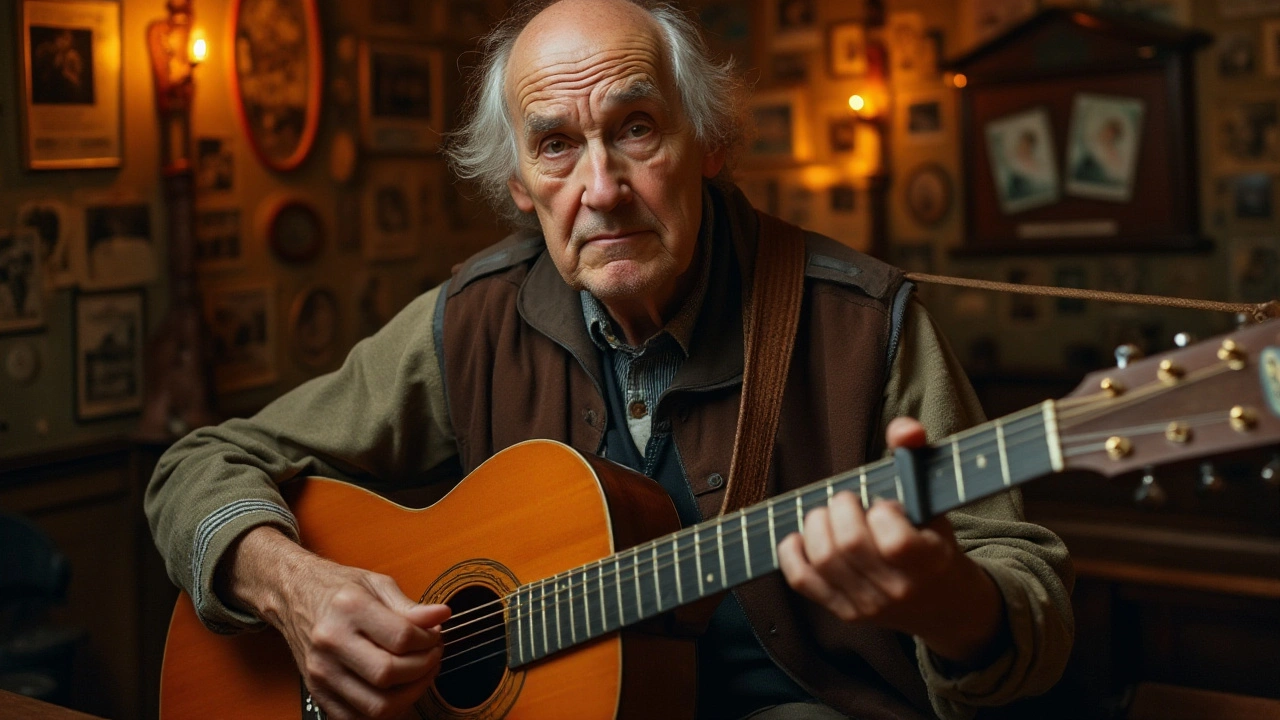
Historical Roots
Tracing the historical roots of folk music takes us on a journey through time and across the world's diverse cultures. Folk music is often defined as the music of the people, and its history is as varied and rich as humanity itself. It’s thought to date back thousands of years and is intrinsically tied to the everyday lives of ancient civilizations. From the rhythmic drum beats in African villages to the poignant ballads sung in the European countryside, folk music is a testament to human creativity and resilience.
One interesting fact about folk music is its role in storytelling. These songs often preserved historical events and moral lessons, acting as oral histories passed down through generations. For instance, in the Basque region of Spain, traditional songs known as “bertsolaritza” have been used for centuries to convey stories and social commentary. In Ireland, the tradition of folk music goes back thousands of years, with harpists and bards composing songs about legends and local heroes.
Different regions developed their own unique styles of folk music, influenced by local traditions, instruments, and themes. Scandinavian folk music, featuring instruments like the Hardanger fiddle, differs significantly from the lively, rhythmic folk tunes of Latin America, played with guitars and maracas. Despite these differences, the underlying essence remains the same: a reflection of the community’s identity and experience.
Renowned folk musician Pete Seeger once said, "The truth is, folk music is music of the working class." Seeger's perspective highlights the grassroots nature of this genre, which has often been a medium for expressing the feelings and struggles of ordinary people. Whether it's American bluegrass or Indian bhangra, folk music resonates with universal themes of love, joy, hardship, and hope.
The evolution of folk music also reflects historical changes. For example, during the Great Depression in the United States, folk music saw a revival as a tool for social and political expression. Artists like Woody Guthrie used their music to highlight the struggles of the time, giving a voice to the disenfranchised and bringing attention to social issues. His famous song, “This Land Is Your Land,” became an anthem for many seeking solidarity.
Interestingly, many folk songs have been preserved and rediscovered in modern times thanks to dedicated ethnomusicologists. Alan Lomax, a notable figure in this field, spent decades recording and preserving traditional music from around the world. His work ensures that these cultural treasures are not lost to time.
In summary, the historical roots of folk music provide a fascinating glimpse into the lives, cultures, and emotions of our ancestors. Each region’s music offers unique insights yet shares common threads that bind humanity together. Understanding these roots allows us to appreciate the depth and diversity of folk music, shedding light on the collective experiences that shape our world.
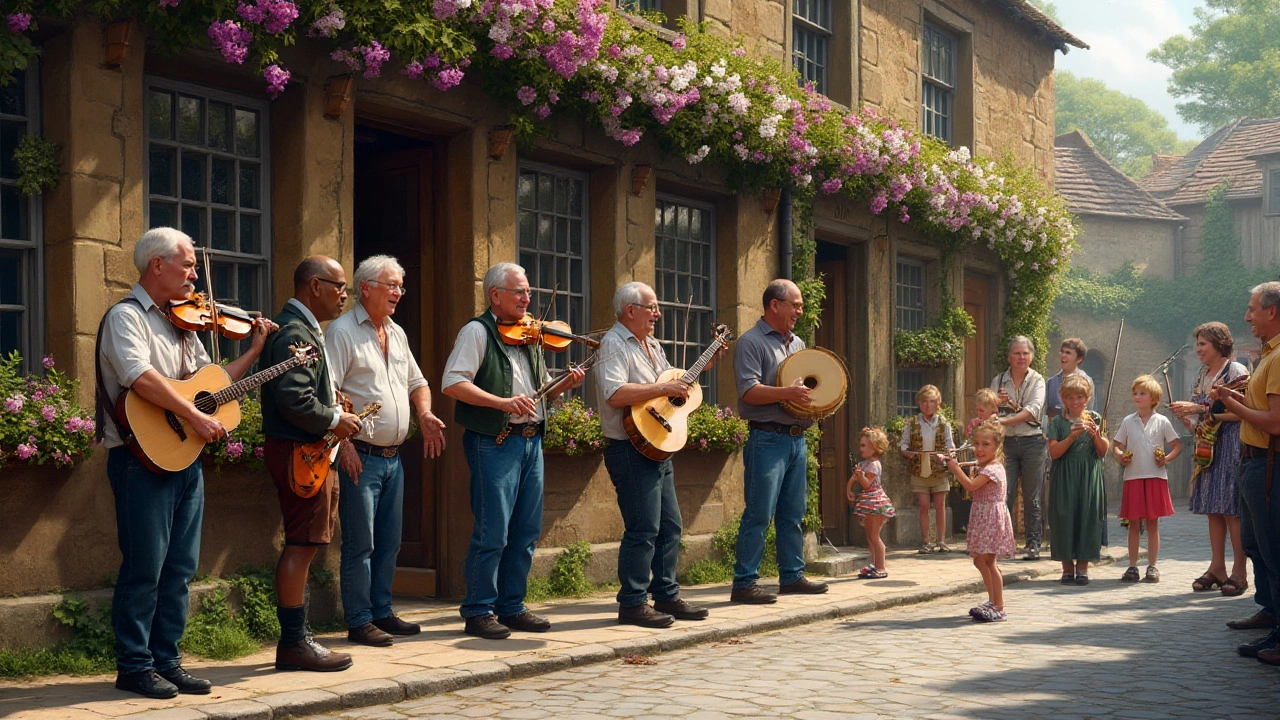
Role in Modern Society
In today's swift-moving, digital era, folk music serves as a poignant reminder of our roots. Amidst the electronic beats and synthesized tunes, folk music stands as a refreshing voice of authenticity and simplicity. It bridges the gap between generations, offering younger audiences a glimpse into the lives and emotions of their ancestors. The power of folk music lies in its ability to evoke nostalgia while remaining relevant in contemporary settings.
An interesting aspect of folk music is its adaptability. Artists and musicians worldwide are blending traditional elements with modern sounds, creating unique and mesmerizing fusion genres. Take, for instance, the rise of folk-pop and indie folk. Bands like Mumford & Sons and The Lumineers have revitalized folk music, introducing it to a new generation of listeners. Their success underscores folk music's enduring allure and its ability to evolve with time.
According to music historian Richard Carlin, "Folk music is not just a relic of the past; it's a living, breathing genre that continues to inspire and move people today."
More than just music, folk traditions and their accompanying stories are woven into festivals, local celebrations, and community gatherings around the world. Events like the Newport Folk Festival in the USA or the Cambridge Folk Festival in the UK demonstrate how folk music continues to thrive and grow. These festivals attract thousands of attendees, emphasizing the genre's significant place in modern culture.
Moreover, the rise of streaming platforms has given folk music a global stage. Spotify, Apple Music, and YouTube have extensive collections of folk music, making it accessible to millions. These platforms enable emerging artists to share their work, ensuring that even the most niche folk traditions gain worldwide recognition.
A fascinating trend is the use of folk music in modern education. Schools and universities incorporate folk traditions into their curriculums to give students a richer understanding of cultural diversity. This approach not only enriches the learning experience but also preserves these valuable traditions for future generations.
In a society increasingly defined by its technological advancements and fast-paced lifestyle, folk music offers a welcome respite. It encourages listeners to slow down, reflect, and connect with their heritage. For many, it’s a way to remember where they come from and to find meaning in the stories passed down through generations.
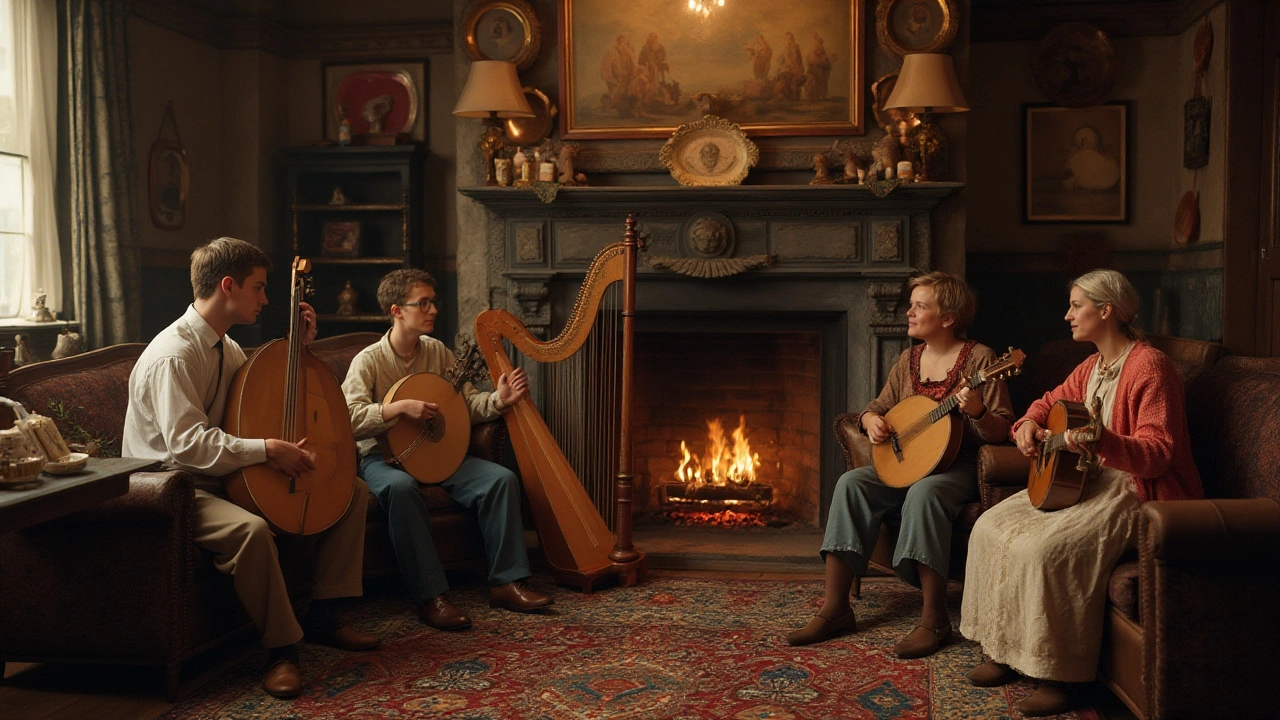
Tips for Rediscovering Folk Music
Rediscovering folk music can be a rewarding journey into the heart of our cultural heritage. Here are some practical tips to immerse yourself in this timeless genre and uncover the rich history embedded in its melodies.
1. Explore Local Folk Festivals
Attending local folk festivals is a fantastic way to experience this genre firsthand. These festivals often feature a variety of folk bands, traditional dances, and workshops on folk instruments. You'll find that many performers are passionate about preserving and sharing their cultural heritage. Engaging with them can provide deeper insights into the stories behind the songs. Plus, it’s an excellent opportunity to meet like-minded individuals who share your interest. As John Smith, a well-known folk musician, once said, "Folk festivals bring people together, weaving a tapestry of our shared history through music."
2. Learn a Folk Instrument
Playing a folk instrument, like the banjo, fiddle, or accordion, can offer a more intimate connection to the music. Many community centers and music schools offer classes for beginners. You can also find online tutorials and forums where enthusiasts share tips and techniques. As you practice, you’ll start to understand the nuances of the music that mere listening can't convey. The process of learning an instrument will deepen your appreciation and make you a part of the living tradition of folk music.
3. Delve into Historical Recordings
Historical recordings are a treasure trove for anyone interested in folk music. Many archives and online platforms, like the Smithsonian Folkways, house countless recordings of traditional songs collected from various cultures. These recordings capture the authentic sounds and stories of yesteryears. Listening to them can transport you back in time and give you a sense of the origins of the tunes you hear today. You’ll find that the songs reflect the lives, struggles, and joys of people from different walks of life.
4. Read Books and Articles
The history and stories behind folk songs are as fascinating as the music itself. Reading books and articles on the subject can provide a deeper understanding of the cultural and historical contexts of the songs. Look for works by renowned musicologists and historians who specialize in folk music. Knowing the background of a song can enhance your listening experience and help you appreciate the layers of meaning embedded in the lyrics and melodies.
5. Join a Folk Music Community
Joining a folk music community, whether online or in-person, can be incredibly enriching. These communities often host events, jam sessions, and discussions. Being a part of such a group allows you to share your experiences, learn from others, and stay updated on upcoming events and recordings. It’s a vibrant way to keep the tradition alive and ensure that folk music continues to thrive. As the famous folk artist Pete Seeger once said, "Participation in folk music is the best way to understand it."

